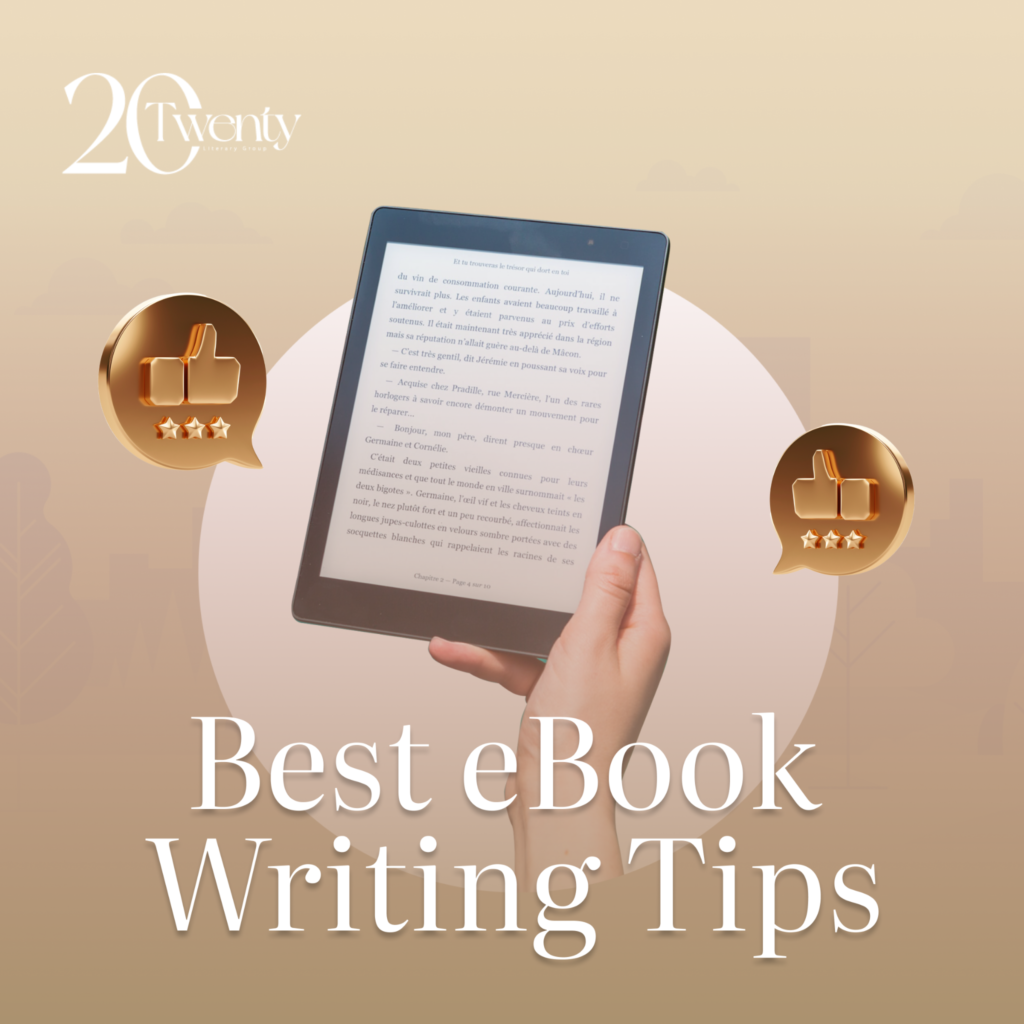eBooks change lives. Publishing an eBook is a great way to start a writing career or make a side income. Many authors know this but haven’t started writing eBooks. You may be one of them—unsure where to start or worried about time.
These tips will help you brainstorm, research, and write your first draft.
Creating Your eBook Idea
The biggest mistake new eBook authors make is picking a great idea without first checking the market.
Strategy 1: Avoid money alone.
Knowing the market size, some topics may seem like great opportunities. Don’t write any book just to make money. The market may be saturated and only established household brands are selling well.
Instead, write about something you know and love. This saves you time and increases the likelihood that you’ll finish your eBook’s final draft.
Strategy 2: Consider your reading.
Browse your subscriptions or blogs to find your specialty. These should indicate!
After deciding, explore these resources. Some articles will appear again (albeit with a different spin), indicating perennially popular topics that could make good eBook topics.
Strategy 3: Use blog or email readers.
Blogs and email newsletters put you ahead of the ebook game. You have a large audience and plenty of inspiration.
Two simple methods:
Poll your audience on three to seven eBook titles or themes. SurveyMonkey or Google Forms work well.
Check your emails and comments. What’s repeated? Can you write an eBook about these issues?
Research Your eBook.
No matter how well you know your subject, you’ll need to research to verify facts and add more interesting details for your readers.
Strategy 4: Schedule research time.
Many authors get stuck during research, collecting more articles and resources, rereading books, and scribbling great quotes, statistics, and references.
Research time can prevent this. This could mean spending two weeks on research before writing or a set amount of time on research for each eBook chapter.
Strategy 5: List similar books or eBooks.
Some authors rely too much on blog posts and articles and not enough on books or eBooks. Find similar books and eBooks on any topic. If you can’t, the subject may be too obscure to focus on.
Use the table of contents or index to find the most relevant parts of each book you read. These may also help you consider new topics.
Strategy 6: Verify data.
If your topic has a few frequently cited facts or figures, it may be tempting to repeat them without verification. However, other writers may not have verified the facts.
Start an eBook Draft
Writers who breezed through concept creation and research may stall here. However, writing your eBook’s first draft isn’t hard!
Strategy 7: Outline first.
Writing is easier with a detailed plan. It’s too easy to get stuck a few chapters into your eBook.
Your outline must include:
Chapters have titles. Avoid phrasing issues for now. 15 short chapters are better than 5 long ones. If your eBook covers a broad topic, it may need three to five sections.
Each chapter should have subheadings or subsections and a list of points to cover. A linear list or mental map can help you generate new ideas and connect them.
Strategy 8: Write without distractions.
Most writers work hard and are easily distracted.
Avoid:
- Use full-screen writing software like Dark Room, Write Room, or Scrivener to eliminate distractions.
- Log out of email, Facebook, Twitter, Skype, and anything else that makes noise or displays pop-up notifications.
- To succeed, create a supportive environment.
Strategy 9: Email writing.
If you’re stuck, pretend you’re emailing a blog reader. Enter your reply.
“How do I register a domain name?” is easier to write than “Domain name registration.” Rephrase subheadings at the end if you dislike the question style.

